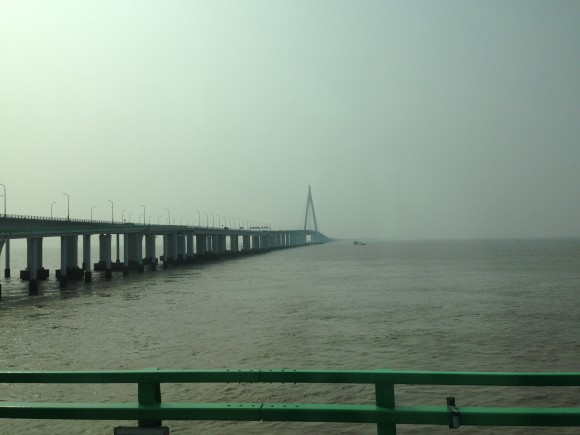It is the second longest bay bridge and the third longest bridge in the world. This massive miracle locates in one of the most active bay areas in the world, Hangzhou Bay. It connects two of the busiest cities in China – Ningbo and Shanghai. There are many options for us to go from Huangshan to Shanghai, but we chose bus ride instead to just go through this legendary bridge.
Earlier in Huangshan we watched a documentary about this bridge. The engineers needed to conquer challenges with natural gas underneath the water, powerful tides and wind. I am sure it took more than what they introduced to build this bridge. But taking a bus ride on the bridge actually took less time than I expected. I realized that the entire bridge is not flat all the way down, instead, its middle part is higher than its left and right ends.
China is famous for its many massive engineering projects. We were lucky to visit many of them during this program including the Hangzhou Bay Bridge. It is amazing to see how engineering technologies have been developed in China. China has set many records for its engineering projects including many longest bridges and tallest buildings. The Chinese government has output a fancy national image with Chinese intelligence and technologies. However, when we are proud to put billions of RMB into a massive project to build “the longest”, “the tallest” and “the biggest”, we still have tons of social security issues that are waiting for money to solve.









